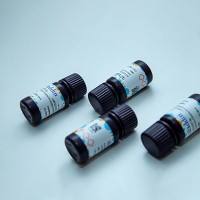设计保护碱基参考资料
丁香园论坛
1237
Cleavage Efficiency Close to the Termini of PCR Fragments
When designing PCR experiments in which the synthesized DNA fragment is to be subsequently digested with a restricton endonuclease, it is very important to determine how many extra nucleotides should be added to the 5'-end of the PCR primer next to the introduced recognition site to ensure efficient cleavage with the appropriate REase. Some REases cleave DNA poorly when their recognition sites are located at the ends of DNA fragments. Information on REase performance close to the end of DNA fragments may be helpful when planning the introduction of cleavage sites at DNA termini in PCR experiments.
Experiments were performed as follows: PCR primers having 1-5 extra nucleotides at the 5'-end of the PCR primers adjacent to the introduced recognition site were 5'-end labeled with [32P] by T4 Polynucleotide Kinase (#EK0031/2) and used in the PCR reaction. Purification of PCR fragment was performed using the modified glass beads procedure as indicated in the DNA Extraction Kit (#K0513) followed by ethanol precipitation or gel filtration. DNA (0.5µg) and 10u of REase were incubated for 1 hour at the recommended incubation temperature and optimal buffer for each enzyme in a total volume of 40µl. Reaction products were separated by 10% PAGE and the percentage of cleavage was determined using OptiQuant Image Analysis Software
please see below:
http://www.fermentas.com/techinfo/re/restrdigpcrii.htm
When designing PCR experiments in which the synthesized DNA fragment is to be subsequently digested with a restricton endonuclease, it is very important to determine how many extra nucleotides should be added to the 5'-end of the PCR primer next to the introduced recognition site to ensure efficient cleavage with the appropriate REase. Some REases cleave DNA poorly when their recognition sites are located at the ends of DNA fragments. Information on REase performance close to the end of DNA fragments may be helpful when planning the introduction of cleavage sites at DNA termini in PCR experiments.
Experiments were performed as follows: PCR primers having 1-5 extra nucleotides at the 5'-end of the PCR primers adjacent to the introduced recognition site were 5'-end labeled with [32P] by T4 Polynucleotide Kinase (#EK0031/2) and used in the PCR reaction. Purification of PCR fragment was performed using the modified glass beads procedure as indicated in the DNA Extraction Kit (#K0513) followed by ethanol precipitation or gel filtration. DNA (0.5µg) and 10u of REase were incubated for 1 hour at the recommended incubation temperature and optimal buffer for each enzyme in a total volume of 40µl. Reaction products were separated by 10% PAGE and the percentage of cleavage was determined using OptiQuant Image Analysis Software
please see below:
http://www.fermentas.com/techinfo/re/restrdigpcrii.htm









